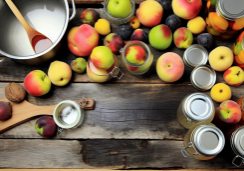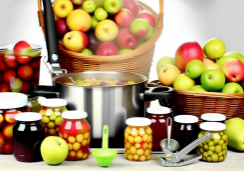Simplify French Cooking: Techniques for Home Chefs
Just as a skilled magician effortlessly weaves a spell over an enraptured audience,
so too can you master the art of French cooking, transforming simple ingredients into a tapestry of taste and elegance right in your own kitchen.
You've likely heard that French cuisine is notoriously complex,
layered with techniques that seem as intricate as lacework.
Yet, here you stand, spatula in hand, ready to demystify the processes that have long been the gatekeepers of gastronomic excellence.
As you embark on this culinary journey,
you'll learn that with a few well-honed skills,
the world of French cooking is not just accessible, but a playground for your own creative expression.
Stay with me as we strip away the intimidation and uncover the secrets to making exquisite French dishes that invite conversation, admiration, and a sense of accomplishment.
Mastering Basic French Techniques
To master the quintessence of French cuisine, you'll start with the foundational practice of mise en place, ensuring every ingredient and tool is prepped and at your fingertips before cooking commences. This culinary technique streamlines your process, imbuing a sense of calm and control as you delve into the art of French cooking.
Next, refine your knife cuts. Precision here is paramount; it's not just about chopping but crafting uniform pieces that cook evenly and present beautifully. From the fine brunoise to the elegant chiffonade, your knife work is a testament to your dedication to classic French cuisine.
As you become adept with your blade, turn your attention to the mother sauces. These are the pillars of basic French cooking methods, each one a gateway to a myriad of delectable dishes. Mastering béchamel, velouté, espagnole, sauce tomate, and hollandaise will elevate your home cook status to that of a French chef.
Essential French Cooking Terms
Having honed your knife skills and mastered the mother sauces, you're now ready to navigate the essential French cooking terms that will further define your culinary repertoire. French cuisine is renowned for its precision, and that starts with mise en place, the foundational technique that involves preparing and organizing ingredients before cooking. This not only streamlines your process but also enhances the flavor and consistency of your recipes.
Your kitchen brigade is critical, too. In professional French kitchens, the brigade system assigns specific roles, from the saucier to the patissier. At home, think of yourself as the head chef with a team of tools at your disposal. When you tourne your vegetables, you're employing a technique that gives them an elegant, uniform shape, perfect for French classics.
As you delve deeper into culinary techniques, practice sautéing for that perfect golden exterior, flambéing to add a dramatic, flavor-packed finish, poaching for delicate textures, and braising to coax out depth and richness. Each method is a building block in the elaborate architecture of French cooking.
Embrace these terms, and you'll not just cook; you'll speak the expressive language of French cuisine.
Crafting the Five Mother Sauces
Dive into the heart of French cuisine by mastering the five mother sauces, each with its unique set of ingredients and techniques that form the base for countless classic dishes.
Begin your journey with Béchamel, a simple whisk of butter, flour, and milk that transforms into a creamy canvas for gratins and lasagnas.
Hone your knife skills as you chop onions and carrots for a Velouté, a delicate blend that's the perfect partner for poultry and fish.
Advance to the robust Espagnole, where a rich brown roux meets a hearty stock, becoming an essential component of authentic French stews.
Embrace the challenge of Hollandaise, the buttery emulsion flavored with lemon juice, which demands a steady hand and a watchful eye to prevent curdling.
And no modern kitchen crafting French cuisine is complete without mastering a vibrant Tomato Sauce, simmered to perfection with herbs and a hint of sweetness.
These recipes and techniques are pillars of making French food at home. By understanding the balance of flavors and the importance of seasoning, you'll elevate your French recipes beyond the everyday.
Advanced French Preparation Methods
After mastering the fundamental five mother sauces of French cuisine, you're ready to tackle advanced preparation methods that will further refine your culinary prowess. These techniques are the cornerstone of the art of French cooking, often perfected by professional chefs in the heat of renowned kitchens. Georges Auguste Escoffier standardized much of what's taught in Culinary School, but it's your turn to bring that knowledge into your home.
Here are three advanced preparation methods to elevate your French style dishes:
- Mise en place: This isn't just prep; it's a philosophy. Organize and arrange ingredients before you start cooking, just as Escoffier intended. This method ensures you aren't scrambling mid-recipe, turning your Tomato Sauce from frantic to French with ease.
- Knife work: Your cuts impact flavor and presentation. Practice julienne, brunoise, and chiffonade to add precision to your dishes, embodying the meticulous nature of modern French cooking.
- Tourne technique: Fostered by Antonin Carême, this skill turns vegetables into works of art, showcasing the elegance French cuisine is known for. While challenging, mastering this can impress any dining guest, much like the creations of Paul Bocuse.
Aspiring chefs, these methods aren't just recipes—they're your canvas. Embrace them, and watch your culinary skills flourish.
French Cooking Tips for Home Chefs
To master the art of French cooking at home, start by embracing mise en place, a technique that not only saves time but also encapsulates the French dedication to meticulous preparation. Before you start cooking, gather all your ingredients and equipment. Chop, measure, and arrange everything within reach. This not only streamlines your cooking process but also prevents frantic searches for that elusive bottle of Herbes de Provence when your hands are deep in Tomato Sauce.
Hone your knife skills to achieve the precision used in French cooking. A sharp knife is your best friend for creating the perfect julienne or brunoise. These fine cuts aren't just for show; they're essential for even cooking and imparting texture to traditional French dishes. When you're ready to impress your friends, practice the tourne technique for vegetables that look as if they came straight from a Parisian bistro.
Expand your repertoire by mastering foundational techniques like sautéing, flambéing, and braising. These methods are the cornerstones of French cuisine and will elevate your cooking and baking to new heights.
Frequently Asked Questions
Quelles Sont Les 5 Techniques Culinaires Françaises ?
You're asking about French culinary techniques! Master these five: sautéing vegetables for flavor, creating roux for thickening, deglazing pans to capture essence, emulsifying vinaigrettes for zest, and braising meats for tenderness. Get cooking!
What Is the Secret of Food French Cooking?
You'll find the secret to French cooking in mastering mise en place, precision cutting, and slow cooking, which enhances flavor layering. Use seasonal ingredients, fresh herbs, butter, and wine to create artful presentations.
What Are the 3 Main Classes of French Cooking?
You'll find haute cuisine, with its French sauces and pastry basics, cuisine bourgeoise, featuring bistro classics and fresh herbs, and the diverse cuisine régionale, celebrating culinary regions, cheese selection, and seasonal ingredients in French cooking.
What Are the Keys to French Cooking?
To excel in French cooking, you'll need to master mise en place, flavor layering, and savvy butter usage. Use fresh, seasonal ingredients, perfect classic sauces, practice precision cutting, include wine, and serve with artisanal bread.
Conclusion
Now you've got the basics down, from knife skills to those five essential mother sauces. Embrace these techniques, and you'll whip up dishes that'll impress anyone.
Remember, French cooking isn't just a method—it's an art. So, keep practicing, play with flavors, and make each recipe your own.
Bon appétit, chef!
Your journey into the heart of French cuisine has just begun, and with each step, you're turning your kitchen into a little slice of France.










